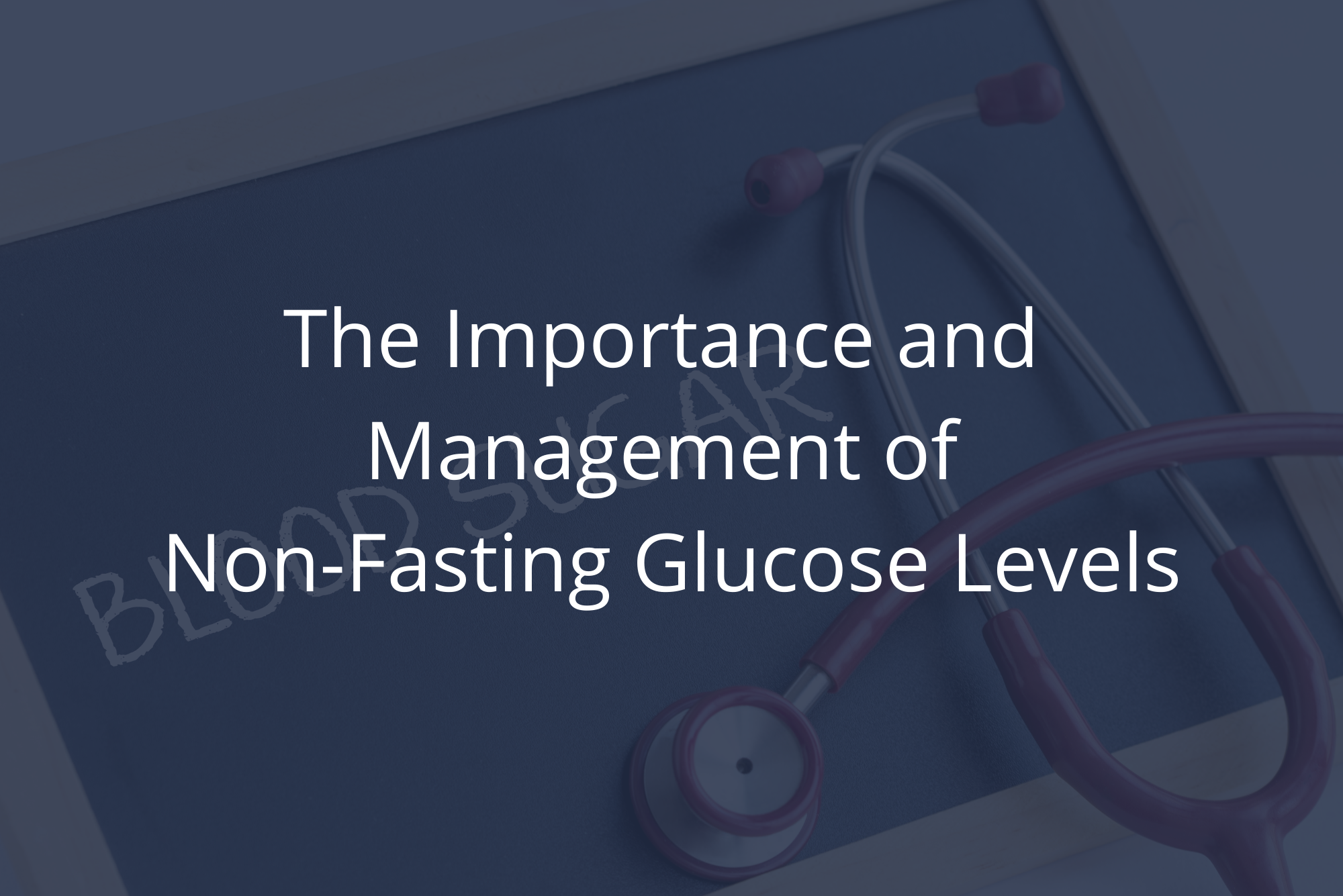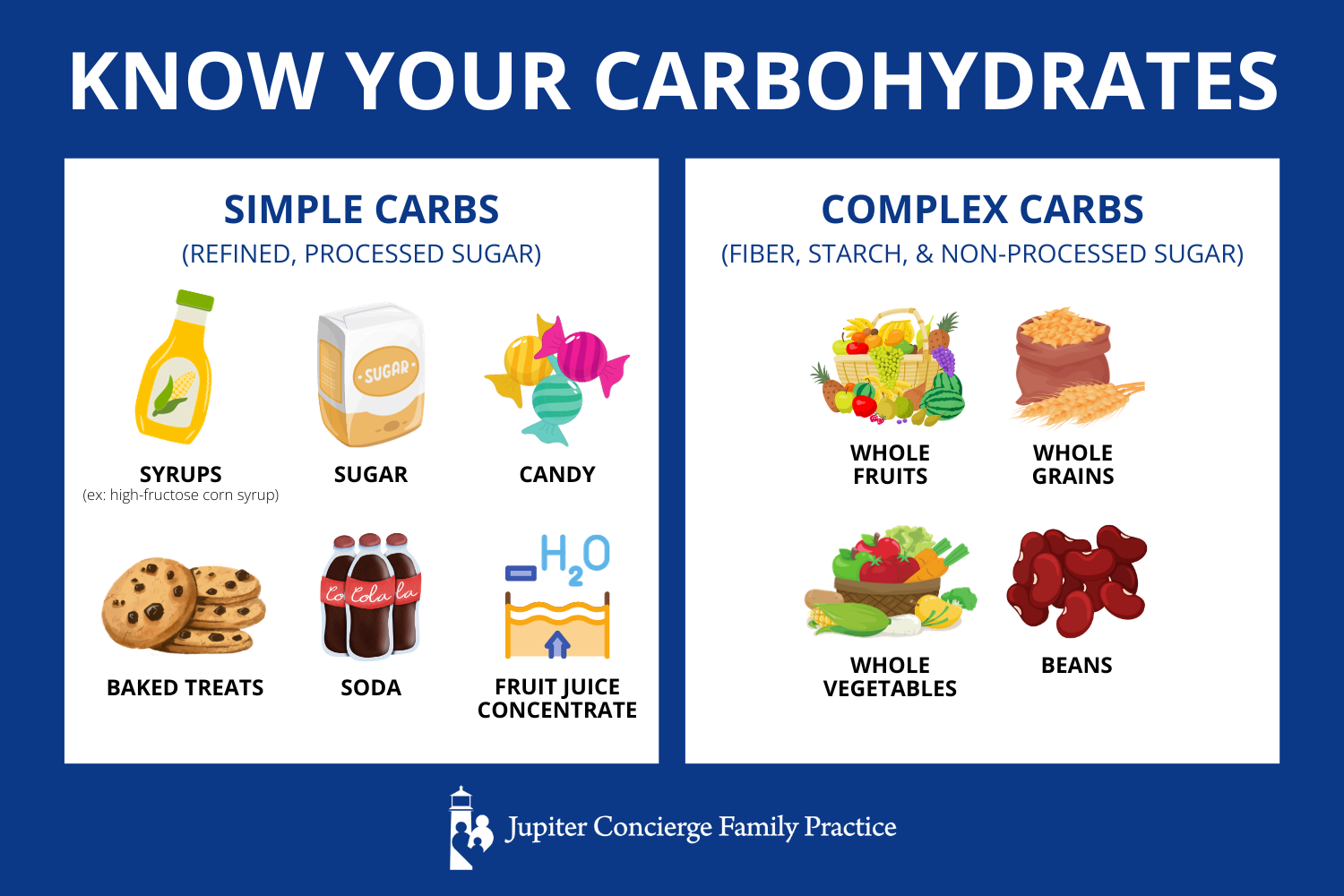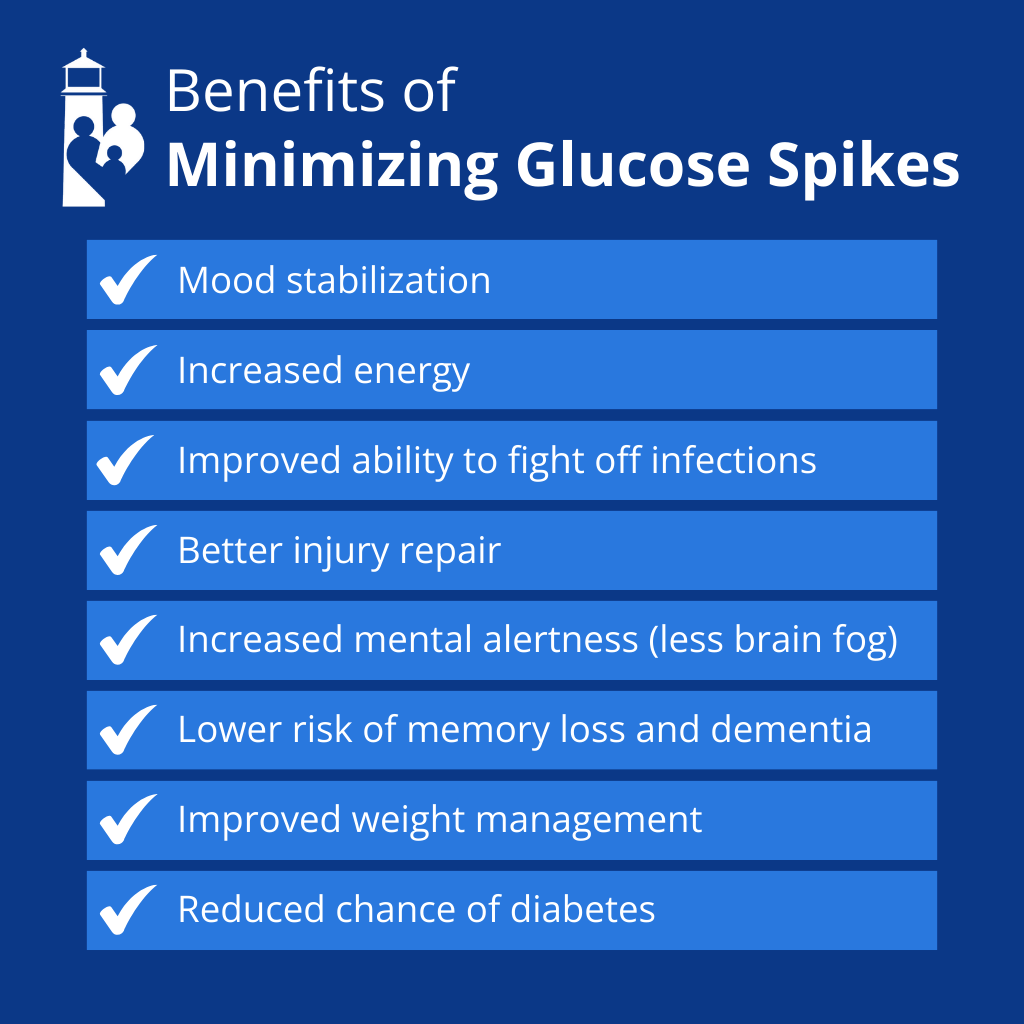
People often think of blood sugar monitoring as something diabetics do, but maintaining healthy glucose ranges is important for everyone — diabetic or not.
Below, we’ll look at the importance of glucose levels — specifically non-fasting glucose levels — to see how maintaining awareness of this important factor can help you live a healthier, more vibrant life.
The What and Why of Glucose
The human body breaks down food for fuel (energy). Glucose is a type of sugar that serves as the body’s main source of fuel. Our body gets glucose by breaking down the carbohydrates we eat, such as fruits, vegetables, breads, and grains. That glucose then moves into the bloodstream, where we refer to it as blood glucose or blood sugar.
Insulin is glucose’s business partner. Insulin, a crucial hormone produced by the pancreas, ferries the glucose floating around in the bloodstream into the cells that need it for fuel. When insulin and glucose aren’t in a balanced relationship, the business folds, and all kinds of undesirable problems result. (If you want to go more deeply into this phenomenon, you can read my previous post about insulin resistance.)
For optimal health, we need to keep our blood sugar levels within a certain range. If our glucose gets too low, for example, we become weak and can lose consciousness.

If our glucose gets too high, however, our bodies have to secrete excess insulin to deal with it. On one hand, high blood glucose levels can lead to dehydration, poor circulation, inhibited wound healing, and increased risk of infection. They can also fuel yeast infections and cancer growth.
On the other hand, high insulin levels lead to fat accumulation and inflammation. Such inflammation then promotes the breakdown of the lining inside our blood vessels, which leads to all kinds of cardiovascular disease.
To top it off, see-sawing between glucose levels — erratic dips and spikes — leads to other issues, such as fatigue. Thus, a healthy and stable glucose level is critically important to your good health.
Non-Fasting Glucose Levels
The good news (or possibly the bad news, depending on your point of view) is that glucose levels are typically direct byproducts of your diet.
A non-fasting glucose level is your blood sugar level after eating, so how much and what kind of carbohydrates you put into your body greatly affect it.
When you consume complex carbohydrates — that is to say, fiber and natural, non-processed sugars — your body breaks the sugar down slowly. Your insulin can keep up with the glucose entering your bloodstream, and there aren’t spikes and dips.
Conversely, your body processes simple carbohydrates — processed sugars — into glucose more quickly. Eating too many simple carbohydrates floods your bloodstream with glucose faster than your body can handle. You pump out insulin to address the excess, but all that surplus insulin floating around eventually leads to a state of insulin resistance.

How to Minimize Glucose Spikes
Sometimes glucose can overwhelm the insulin that’s supposed to transport it. This can happen for a couple of reasons: insulin deficiency, meaning the pancreas isn’t making enough insulin to control glucose levels, or insulin resistance, meaning there’s enough insulin but the body isn’t responding to it properly.
Whatever the root cause, the result is a spike in blood glucose. And where there’s a spike, a fall is sure to follow.
Minimizing glucose spikes has both long-term and short-term health benefits, such as:
- Mood stabilization
- Increased energy
- Improved ability to fight off infections
- Better injury repair
- Increased mental alertness (less brain fog)
- Lower risk of memory loss and dementia
- Improved weight management
- Reduced chance of diabetes

How to Manage Non-Fasting Glucose Levels
We can achieve healthy glucose levels by turning, as always, to the Four Pillars of Health:
Nutrition. Minimizing processed foods will help reduce glucose spikes, and maximizing fiber can help keep sugar levels steady. Consider working with a nutritionist to determine the best diet for you.
Exercise. Getting adequate exercise builds muscle mass and promotes insulin sensitivity. Because muscles burn lots of energy — even when you’re not doing anything — they keep sugar spikes to a minimum. It’s important to exercise mindfully; these exercise guidelines can help you reduce the likelihood of exercise-related injuries.
Sleep and Stress Elimination. Both sleep and stress elimination minimize spikes in cortisol, a hormone that promotes high blood sugar. Practicing good sleep hygiene is an excellent way to promote quality, restorative sleep. And remember that there are multiple types of stressors for us to assess and, where possible, eliminate.
Conclusion
Maintaining a stable blood sugar level within a healthy range has far-reaching benefits. One important aspect of this stability is paying mindful attention to your eating. From present-day mental alertness to reduced risk of dementia in the future, you’ll thank yourself for keeping your non-fasting glucose levels in check through a healthy diet, and for embracing the pillars of health that support it.

Dr. David Rosenberg
Dr. Rosenberg is a board-certified Family Physician. He received his medical degree from the University of Miami in 1988 and completed his residency in Family Medicine at The Washington Hospital in Washington, Pennsylvania in 1991. After practicing Emergency Medicine at Palm Beach Gardens Medical Center for two years, he started private practice in Jupiter, in 1993. He is an avid baseball fan and Beatles fanatic, since he was 8 years old. He has been married to his wife, Mary, since 1985 and has three grown children.
David completed additional studies at Mercer University, Macon, Georgia and obtained a BS in Chemistry in 1983.
“My interests include tennis, snow skiing, Pilates and self-development.”
